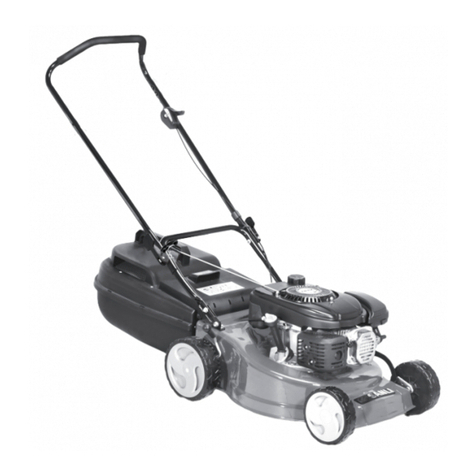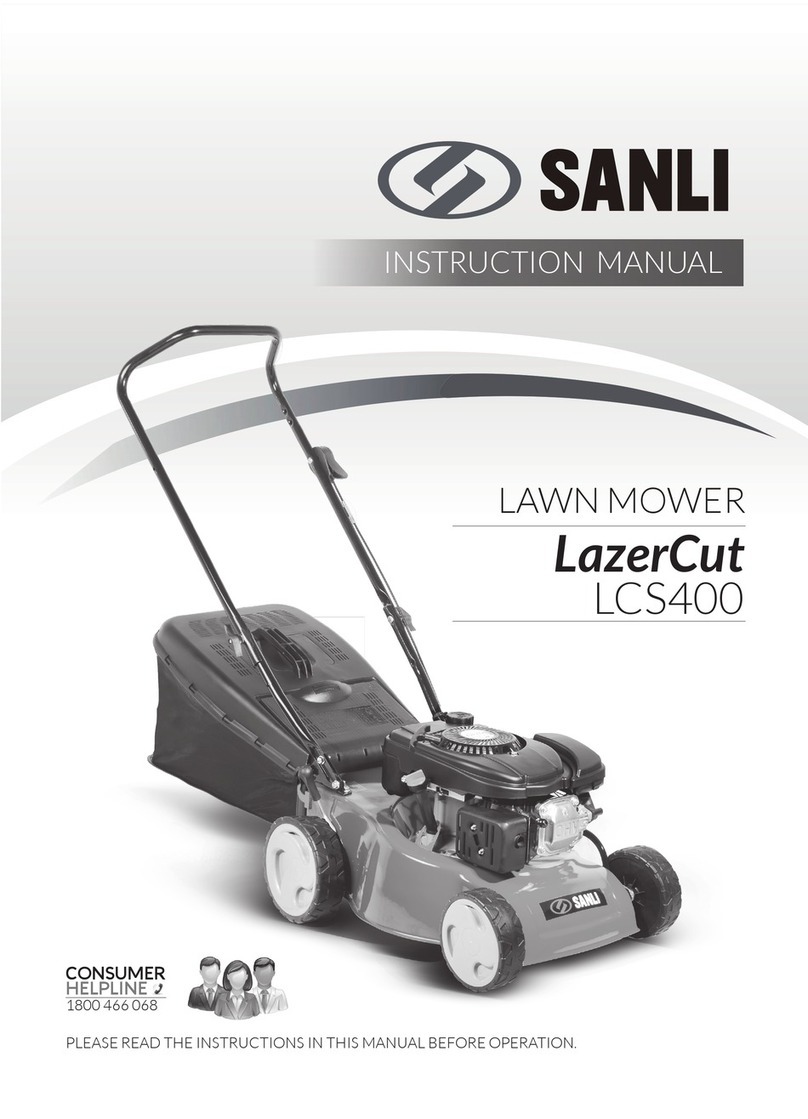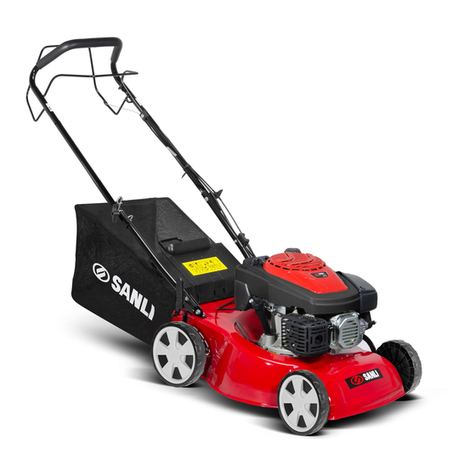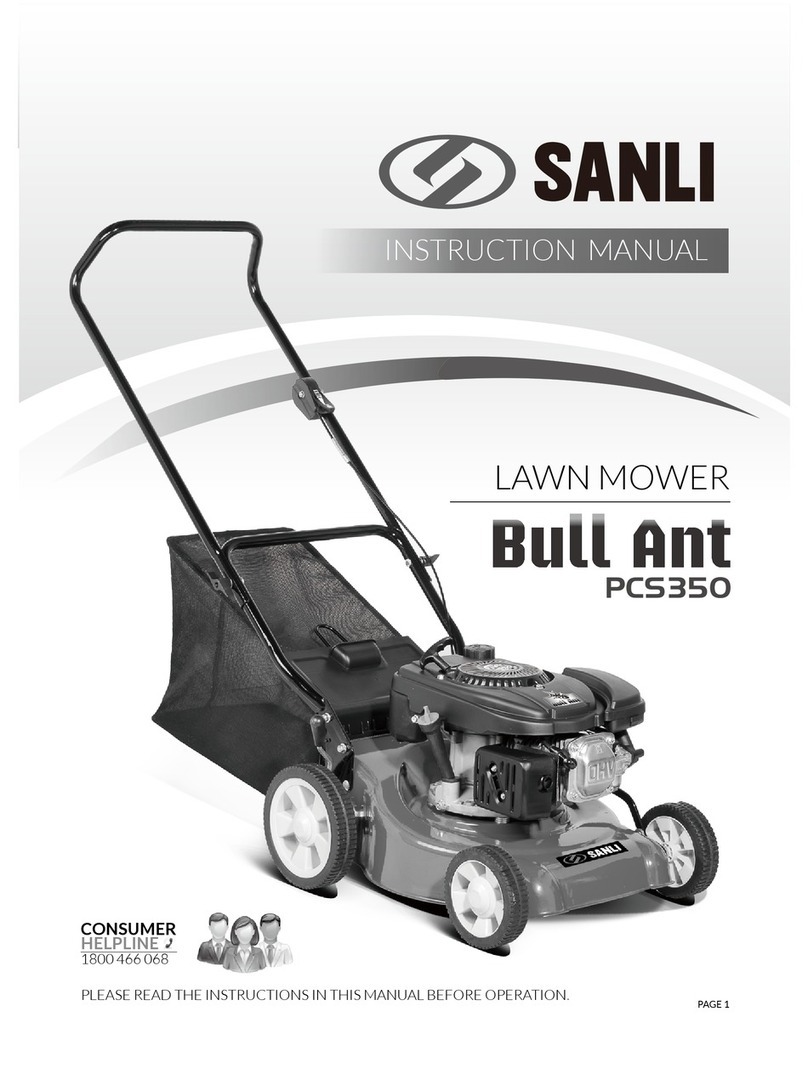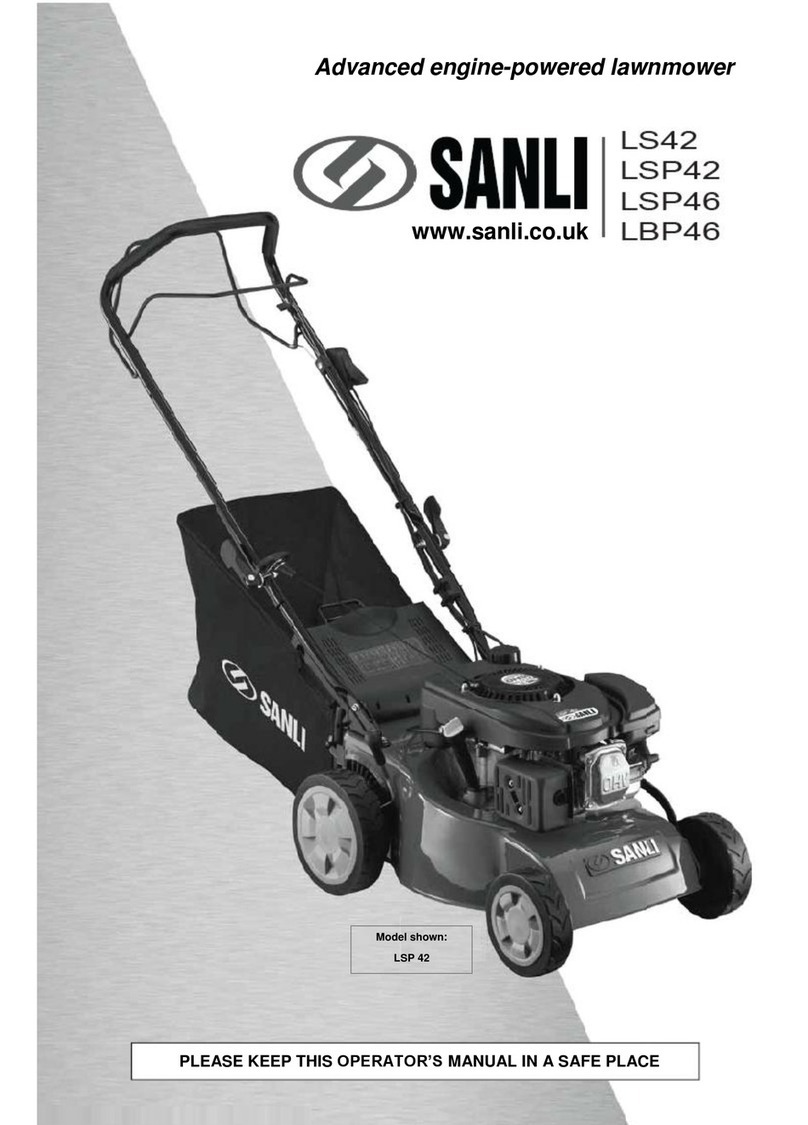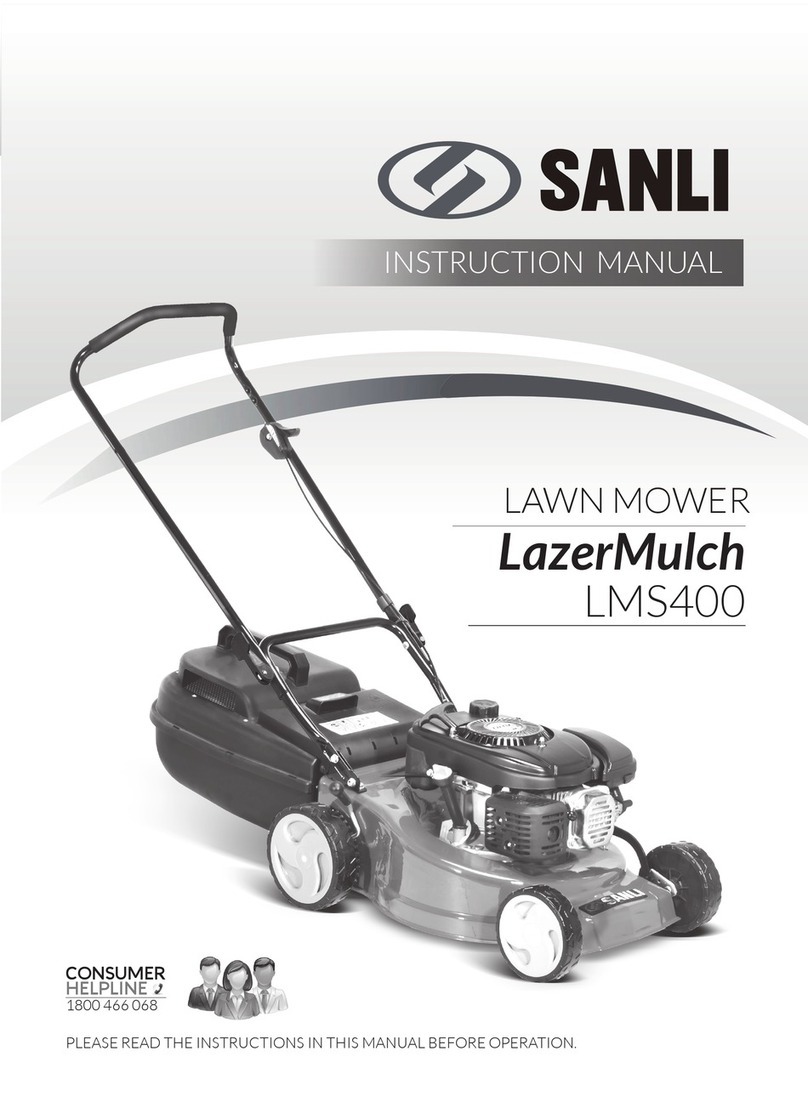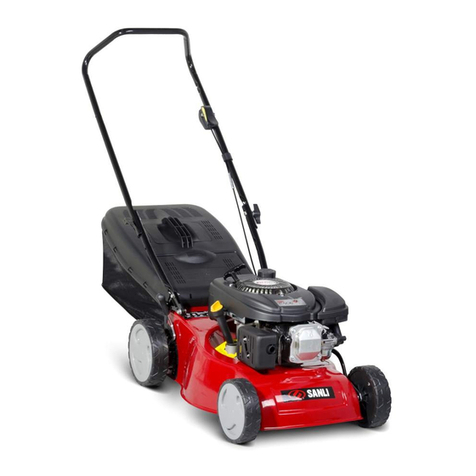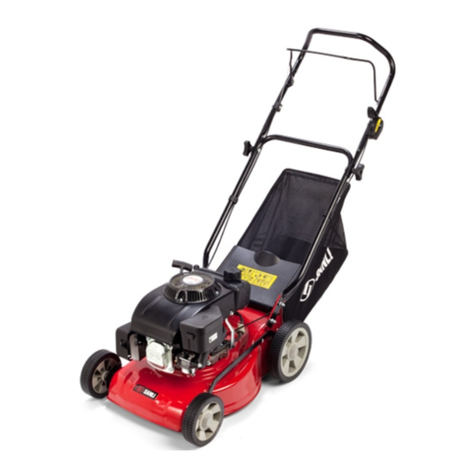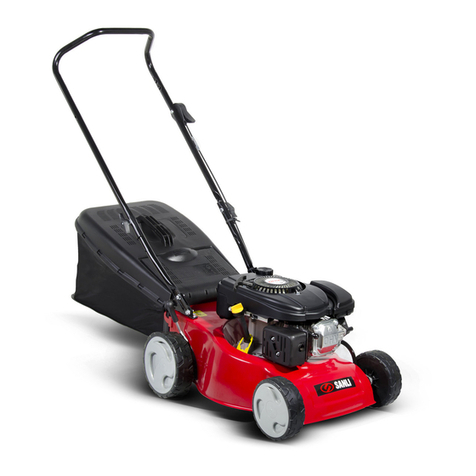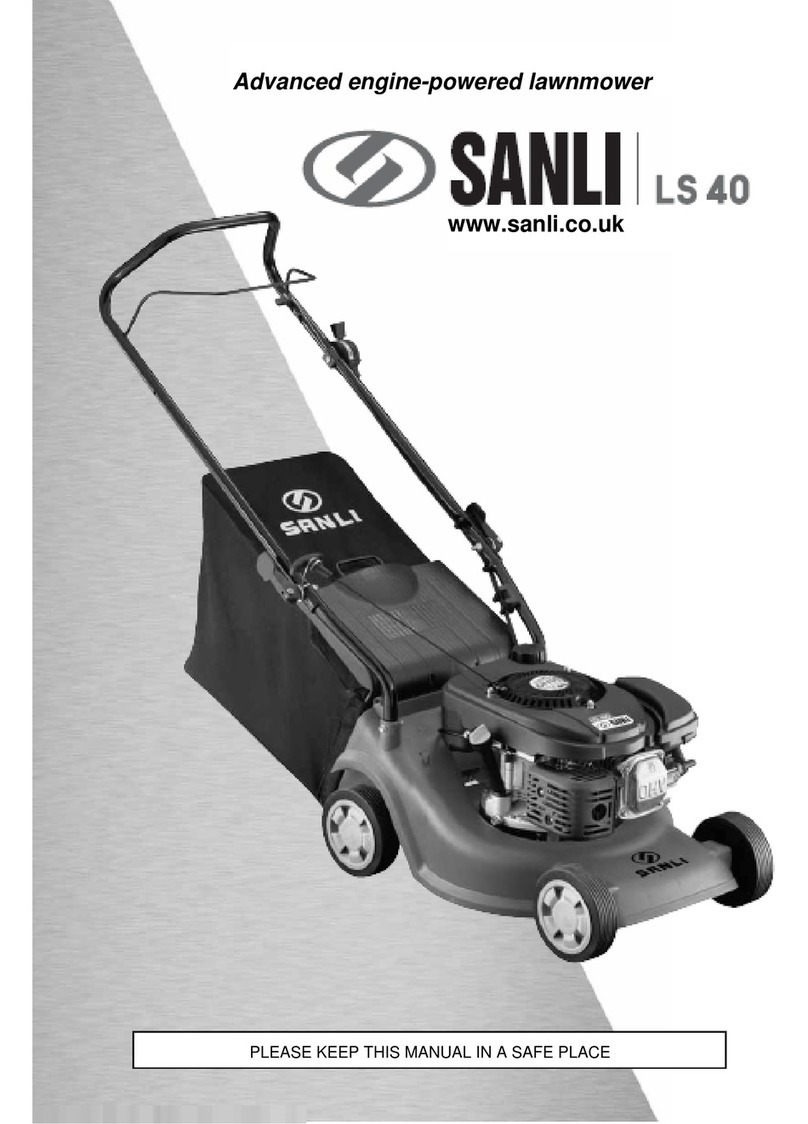02
SAFETY RULES
Safe Operation Practices for Ride-On Mowers
DANGER: THIS CUTTING MACHINE IS CAPABLE OF AMPUTATING HANDS AND FEET AND THROWING
OBJECTS. FAILURE TO OBSERVE THE FOLLOWING SAFETY INSTRUCTIONS COULD RESULT IN SERIOUS
INJURY OR DEATH.
1.GENERAL OPERATION
•Read,understand,andfollowallinstructionsonthe
machineandinthemanualbeforestarting.Donot
puthandsorfeetnearrotatingpartsorunderthe
machine.
•Keepclearofthedischargeopeningatalltimes.
•Onlyallowresponsibleadults,whoarefamiliar
withtheinstructions,tooperatethemachine.
Cleartheareaofobjectssuchasrocks,toys,wire,
etc.,whichcouldbepickedupandthrownby
theblades.Besuretheareaisclearofbystanders
beforeoperating.Stopmachineifanyoneenters
thearea.Nevercarrypassengers.
•Donotmowinreverseunlessabsolutelynecessary.
Alwayslookdownandbehindbeforeandwhile
backing.
•Neverdirectdischargedmaterialtowardanyone.
Avoiddischargingmaterialagainstawallor
obstruction.Materialmayricochetbacktoward
theoperator.Stopthebladeswhencrossinggravel
surfaces.Donotoperatemachinewithoutthe
dischargechute,orothersafetydevicesinplace
andworking.
•Slowdownbeforeturning.
•Neverleavearunningmachineunattended.Always
turnoffblades,setparkingbrake,stopengine,and
removekeysbeforedismounting.
WARNING: In order to prevent
accidental starting when setting up,
transporting, adjusting or making
repairs, always disconnect spark
plug wire and place wire where it
cannot contact spark plug.
WARNING: Do not coast down a
hill in neutral, you may lose control
of the tractor.
WARNING: Tow only the
attachments that are
recommended by and comply with
specifications of the manufacturer
of your tractor. Use common sense
when towing. Operate only at the
lowest possible speed when on a
slope. Too heavy of a load, while on
a slope, is dangerous. Tires
can lose traction with the ground
and cause you to lose control of
your tractor.
•Disengagebladeswhennotmowing.Shutoff
engineandwaitforallpartstocometoacomplete
stopbeforecleaningthemachine,orunclogging
thedischargechute.
•Operatemachineonlyindaylightorgoodartificial
light.
•Donotoperatethemachinewhileunderthe
influenceofalcoholordrugs.
•Watchfortrafficwhenoperatingnearorcrossing
roads.
•Useextracarewhenloadingorunloadingthe
machineontoatrailerortruck.
•Alwaysweareyeprotectionwhenoperating
machine.
•Dataindicatesthatoperators,age60yearsand
above,areinvolvedinalargepercentageofriding
mower-relatedinjuries.Theseoperatorsshould
evaluatetheirabilitytooperatetheridingmower
safelyenoughtoprotectthemselvesandothers
fromseriousinjury.
•Followthemanufacturer'srecommendationfor
wheelweightsorcounterweights.
•Keepmachinefreeofgrass,leavesorotherdebris
build-upwhichcantouchhotexhaust/engine
partsandburn.Donotallowthemowerdeckto
blowleavesorotherdebriswhichcancausebuild-
uptooccur.Cleananyoilorfuelspillagebefore
operatingorstoringthemachine.Allowmachine
tocoolbeforestorage.
2.SLOPE OPERATION
Slopes are a major factor related to loss of control
and tipover accidents, which can result in severe
injury or death. Operation on all slopes requires
extra caution. If you cannot back up the slope or
if you feel uneasy on it, do not mow it.
•Mowupanddownslopes,notacross.
•Watchforholes,ruts,bumps,rocks,orother
hiddenobjects.Uneventerraincouldoverturnthe
machine.Tallgrasscanhideobstacles.
•Choosealowgroundspeedsothatyouwillnot
havetostoporshiftwhileontheslope.
•Donotmowonwetgrass.Tiresmaylosetraction.
Alwayskeepthemachineingearwhengoing
downslopes.Donotshifttoneutralandcoast
downhill.
•Avoidstarting,stopping,orturningonaslope.If
thetireslosetraction,disengagethebladesand
proceedslowlystraightdowntheslope.
•Keepallmovementontheslopesslowandgradual.
Donotmakesuddenchangesinspeedordirection,
whichcouldcausethemachinetorollover.
•Useextracarewhileoperatingmachinewithgrass
